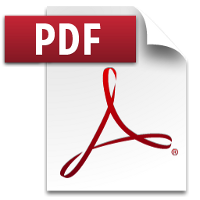 Conversion of South African Special Risks Insurance Association, 1998
Conversion of South African Special Risks Insurance Association, 1998
R 385
Perishable Products Export Control Act, 1983 (Act No. 9 of 1983)RegulationsRegulations relating to the Export of Perishable Products, 2025 - effective July 2025Chapter 7: Certification of Equipment, Handling and Storage Facilities and Modes of TransportPart G: Containers36. Requirements for containers |
| (1) | All containers shall, prior to inspection, have doors closed for the time period stipulated by the Board and shall be cleaned to the satisfaction of the Board and shall, before stuffing, be subjected to an inspection by a representative of the Board. |
| (2) | At the time of inspection, the Board shall be satisfied that the external condition of each container meets the following requirements: |
| (a) | Container frames and external panels are in a state so as to effect proper temperature control. |
| (b) | The doors of the container shall open and close easily and seal so as to be airtight, without the need for excessive force to be exerted to the locking handles. Rubber seals to doors shall not be loose or damaged. |
| (c) | The seal toggle of each container shall be in proper working order. |
| (d) | Pop-rivets shall not be permitted to protrude on contact surfaces, and no scored or damaged contact surface shall be permitted. |
| (e) | Delaminated and/or bulging panels will only be permitted when they meet the specifications of the Board. |
| (3) | At the time of inspection, the Board shall be satisfied that the internal condition of each container meets the following requirements: |
| (a) | The inside of the container shall be clean, dry, have no flaking and transferable rust and are free of all odours. |
| (b) | The T-bar floor sections of the container shall be in good condition so as not to present any ragged edges to the perishable product, or obstruct airflow at floor level. |
| (c) | The air deflector panel shall be undamaged, attached securely and not protrude above the T-bar floor. |
| (d) | The area behind the air deflector plate shall be undamaged, clean and clear of all obstructions. |
| (e) | Insulation panels shall be undamaged. |
| (f) | Delaminated, lose or bulging panels (on roof and/or sides) shall only be permitted when they meet the specifications of the Board. Floors may be loose provided that the seams and joints do not show signs of cracking or hinder the loading process. |
| (g) | The container shall be fitted with suitable drainage plugs that are approved by the Board. The drainage holes shall be capable of being closed and opened by using such drainage plugs. |
| (4) | Each refrigerated container shall be registered, carry a valid container number and shall have a classification certificate, issued by one of the recognised classification societies (including but not limited to Lloyds of London). |
| (5) | Shipping lines (cold chain service providers) are responsible to ensure that refrigerated containers to ship perishable products are clean, dry, taint free and technically and structurally sound. |
| (6) | Before any perishable product is loaded into any refrigerated container, a representative of the Board shall satisfy himself that such container is clean, dry, taint free and technically and structurally sound. |
| (7) | The internal and external condition of the refrigerated container shall comply with the requirements provided in these regulations with regard the in condition of containers, and each approval by the Board is valid for 60 days from date of approval by the Board. |